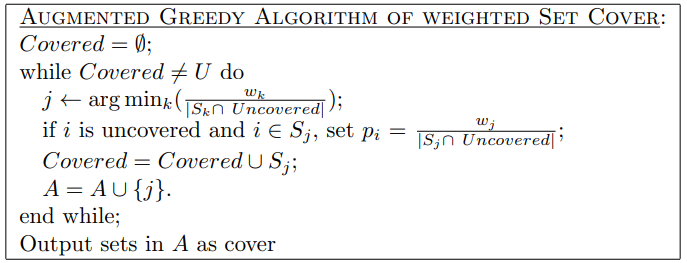Suppose we have n food dishes associated to a cost c, and we have i guests such that each one of them has a certain number of preferences. We want to choose a menu such that we minimize the cost and such that at least one preference for each guest is satisfied.
I implemented an easy greedy algorithm that orders each element in respect of their $\frac{\text{# of people satisfied}}{\text{cost}}$ for example if element "a" satisfies 3 people if choose and has a cost of 10, its ratio would be $3/10$. I chose each element in a non-increasing order. Until i run out of people to satisfy.
How do i find the approximation factor for this algorithm? I think it should be around 2 since it's very similar to a greedy approach to knapsack problem, but i have no clue on how to demonstrate it.

